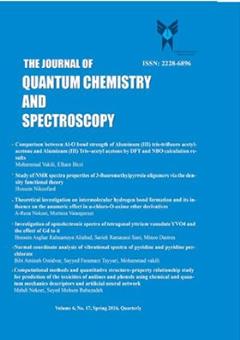Comparing the performance of polyaluminum chloride and ferric chloride coagulants in removing biological agents and determining raw water turbidity by spectrophotometric method
Subject Areas :نوشین اصول دینی 1 , سعید صادقیان 2 , محمد عبدالله زاده 3
1 - گروه شیمی دارویی، دانشکده شیمی دارویی، دانشگاه علوم پزشکی دانشگاه آزاد اسلامی تهران، تهران، ایران
2 - گروه شیمی کاربردی، دانشکده شیمی دارویی، دانشگاه علوم پزشکی دانشگاه آزاد اسلامی تهران، تهران، ایران
3 - کارشناس حوزه بهره برداری شرکت آب و فاضلاب کشور، تهران، ايران
Keywords:
Abstract :
The turbidity of treated water is measured as an important parameter in determining the quality of water in all treatment plants, but due to the importance of the issue in the use of coagulants and due to its relationship with the amount of biological factors such as diatoms, chlorophytes and Counting and controlling these factors is considered as a water quality parameter next to turbidity. The goal in this research is to investigate and compare the effect of liquid polyaluminum chloride [(Falopac6303)PACl] and chlorferric [FeCl3+18H2O] coagulants in removing biological factors in the raw water entering the water treatment plant by using the jar test and performing the test It is biological. In this research, the increase of primary turbidity was measured by spectrophotometer in the range of 100, 50, 20, 10, 6 and 2 NTU, and the efficiency of removing biological factors at pH=7.87 and the optimal injection of each of the coagulants was 15 A 10% increase in removal efficiency was observed in liquid polyaluminum chloride coagulant compared to chlorofric. The result of this investigation showed that the liquid polyaluminum chloride coagulant has a higher efficiency in removing biological agents than ferric chloride.


